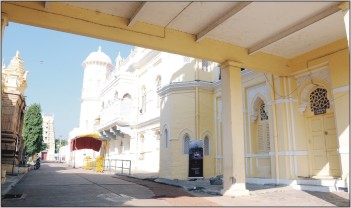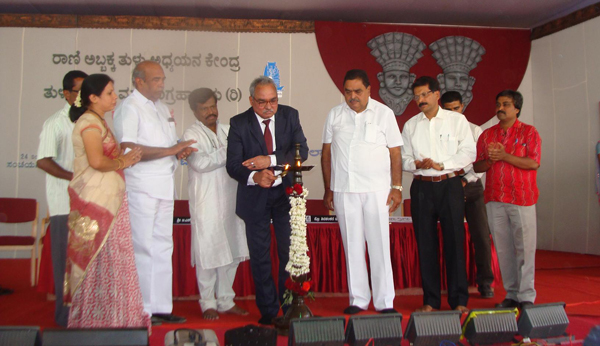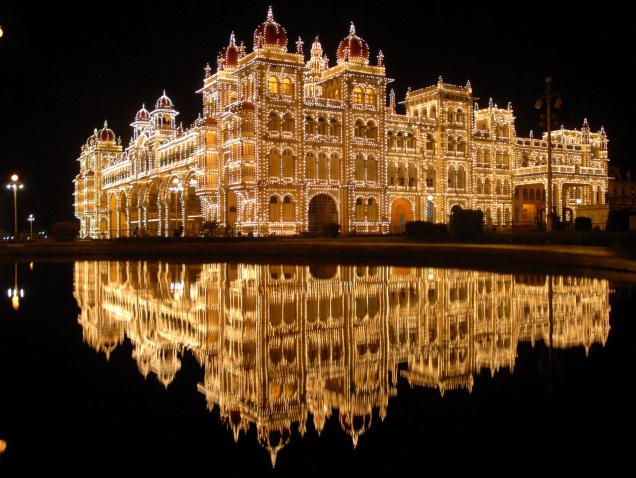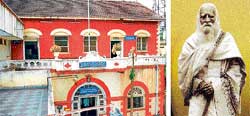By Prof. A.V. Narasimha Murthy,
Former Head, Department of Ancient History & Archaeology, Mysore University
The saga of unification of Karnataka reads like an epic involving sacrifices, thinking, planning, agitating, coaxing, requesting, threatening etc. by leaders. The seeds for this great event which flowered in 1956 were sown more than a century ago with multi-pron-ged programmes but with a single agenda.
It was Deputy Channabasappa who in 1956 announced his idea of a State of Karnataka for the Kannada speaking people. This was fortified by the establishment of Karnataka Vidyavardhaka Sangha at Dharwad in 1890 with this as its main aim. Benagal Ramrao delivered a lecture in 1903 at Dharwad asking the authorities to form a Karnataka State. However, this got a bigger boost in 1907 when Alur Venkatarao, known as the high priest of Kannada people (Kannada-kula purohita) wrote a brilliant article arguing for the formation of Karnataka State and this proved to be an eye-opener to the people of Karnataka to unite themselves under the banner of Karnataka. Lokamanya Tilak supported the cause of linguistic States before the Royal Commission in 1908.
The inauguration of Kannada Sahitya Parishat in 1915 was a catalyst for the unification movement. In the very first conference, the Parishat passed a resolution for the formation of Karnataka State. To support this stand, an organisation called Karnataka Sabha was formed in 1917 by Mudavida Krishnarao, Kadapa Raghavendra Rao and others. Many submissions were made to the Secretary of State for India, Montegue. Some influential persons of this movement were also the members of Indian National Congress.
Consequently, the annual sessions of National Congress were also used for airing this problem. Even Gandhiji blessed this movement saying that it is close to his heart. Nagpur session of the Congress passed a resolution also.
A political conference was held in 1920 under the Chairmanship of Dewan Madhava Rao which stressed the need for the formation of Karnataka State. Siddappa Kambali passed a resolution in Bombay Legislature in 1920. All India Congress Committee urged the government to start the process of the formation instead of discussing it any more, with regard to Andhra, Karnataka and Sindh. This opinion was placed before the Pandit Nehru Committee in 1928. Nehru approved it and this was placed at the Lucknow Congress session and it was passed.
Another significant step was taken in 1928-29 by placing this subject before the Simon Commission. This Commission appreciated and justified the formation of linguistic States. Not satisfied by this, Benagal Ramarao, Benagal Shiva Rao (both brothers) and Mirza Ismail took this subject in 1931 to the Round Table Conference held at London. This proved a great success because the British authorities were convinced of the necessity and justification for a new State of Karnataka.
In the meantime, it became very clear that unless India became independent, the formation of Karnataka would be a mirage and hence the concerned persons turned towards this goal. Many literary giants like BM Sri, Kuvempu, Anakru, Bendre and others wrote and made Karnataka their mantra and began writing, lecturing and created a mass involvement in this movement. In a highly emotional way, they described the Goddess Karnataka being cut into parts like Mysore State of the Maharaja, Madras Karnataka, Bombay Karnataka, Kerala Karnataka, Kodagu and many petty States ruled by Nawabs, etc and hence she is bleeding and it is the duty of every Kannadiga to redeem her from this atrocity committed on her.
Common people became passionate about their bleeding mother. At this time some influential people felt that the freedom movement should not be diluted in Karnataka for the sake of formation of Karnataka and advised the freedom fighters to wait till the country got freedom. Many were disappointed by this stance but had to be patient in the light of utterances of the leaders of the freedom movement.
In 1946, a huge conference was held at Davanagere in which Mysore Pradesh Congress played a prominent role. At this time, some persons posed the problem of Mysore Maharaja’s State being separate from the formation of Karnataka. However, India became independent in 1947 and the Maharaja’s State was merged into Indian Union after a small struggle.
A Committee headed by Sri Dhar was formed to look into this problem. In the 1952 General elections, Congress won the majority seats and hence it became strong. It threatened to resign enmasse if Karnataka State was not formed forthwith. Then the Central Government opened its eyes and constituted the State Reorganisation Committee in 1953 with Fazal Ali as the Chairman, H.N. Kunjan and K.M. Panikkar as members. It examined 1, 54, 250 records, memoranda, maps, books etc, met 9,000 persons and gave a report on Sept. 30, 1953.
It was placed before the Lok Sabha and was passed on 10th June 1956. The President gave his assent on 31st August 1956. The State of Karnataka came into existence on 1st November 1956. But the State was called Mysore State and majority of the people were not happy with this. The then Chief Minister D. Devaraja Urs managed to rename it as Karnataka State on 1st Nov. 1956 as per the aspirations of the Kannada speaking people.
On this occasion, it is our duty to remember with gratitude all those who put in their efforts so that we can be proud of the name Karnataka.
source: http://starofmysore.com / Feature Articles / November 05th, 2011
 Caption: The locked library in Palace Premises
Caption: The locked library in Palace Premises




 There are umpteen number of Catholic and Protestant churches in the coastal districts of Dakshina Kannada and Udupi. However, St Paul’s Church is the oldest Protestant church of coastal districts (perhaps in Karnataka too).
There are umpteen number of Catholic and Protestant churches in the coastal districts of Dakshina Kannada and Udupi. However, St Paul’s Church is the oldest Protestant church of coastal districts (perhaps in Karnataka too).